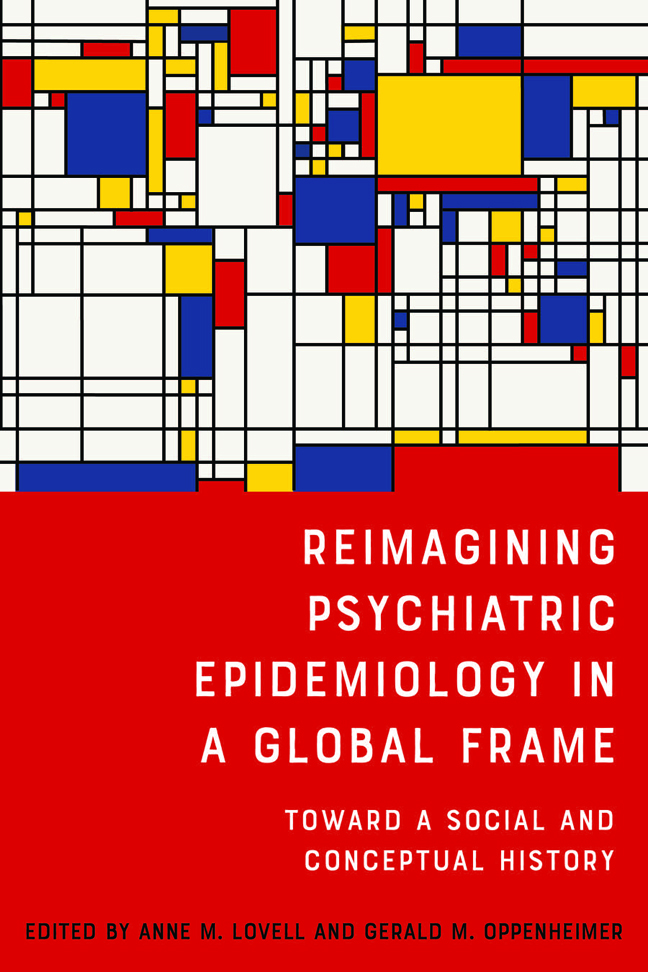Book contents
- Frontmatter
- Contents
- Acknowledgments
- Introduction
- Part One Constructing Mental Health Utopias and Dystopias with Epidemiology
- Part Two Troubling the Boundaries of Psychiatric Epidemiology
- Part Three Decentering Psychiatric Epidemiology in a Postcolonial World
- Selected Bibliography
- Notes on Contributors
- Index
Introduction
Published online by Cambridge University Press: 15 February 2024
- Frontmatter
- Contents
- Acknowledgments
- Introduction
- Part One Constructing Mental Health Utopias and Dystopias with Epidemiology
- Part Two Troubling the Boundaries of Psychiatric Epidemiology
- Part Three Decentering Psychiatric Epidemiology in a Postcolonial World
- Selected Bibliography
- Notes on Contributors
- Index
Summary
Elements for a History of Psychiatric Epidemiology
Psychiatric epidemiology, like the epidemiology of cancer, heart disease, or AIDS, contributes increasingly to shaping the bio-politics of nations and worldwide health campaigns like the Global Burden of Disease and the health objectives of the UN Sustainable Development Goals. Epidemiological pronouncements spill over from the professional and pragmatic confines of public health and psychiatric research into popular culture, where multiple media sources feed public concern, if not fascination, with the increase in rates of psychiatric distress and disorders. Epidemiologists, pundits, patient advocates, and ordinary citizens debate whether epidemics of mental and neurological problems are real or whether conditions like depression or autism spectrum disorder are rising. Widely disseminated mental health statistics act as a thermometer, broadcasting the emotional temperature of nations, communities, and identity-based groups. Awareness of psychiatric conditions classified according to Euro-American nosology3 and treated with modalities developed in North American, European, and Australian research centers surfaces in “mental health talk” and facilities in nations wealthy and poor. The temporal and geographic distribution of psychiatric conditions translates into the language of “contagious” or at least communicative psychic epidemics, like the spread of hikikomori, a rampant phenomenon of acute social withdrawal, from Japan to other countries.
The science of patterns of mental disorders underpins mental health bureaucracies that foster public health education, programs, and treatment. Psychiatric epidemiology also contributes to the governmentality of everyday life, in the shift from lab to living room, from survey to self-surveillance. Health democracy efforts often accompany this displacement, as patient organizations, employees, communities, and others arm themselves with epidemiological facts, officially or popularly conceived, in their struggles against stigma and victimization and their pursuit of health equity or chemical and psychological treatment and enhancement.
In what follows, we present an overview of our current knowledge of the history of psychiatric epidemiology, viewed globally, and offer summaries of this volume's essays. Some readers may prefer to skip directly to those synopses.
In the Beginning
Modern epidemiology began within population health concerns in the early nineteenth century, with the systematic enumeration and analysis of birth, death, and disease events in populations and with national censuses. Statistics on health had been systematically developed in the previous century, such as those gathered by royal representatives in the provinces of France's ancien regime.
- Type
- Chapter
- Information
- Reimagining Psychiatric Epidemiology in a Global FrameToward a Social and Conceptual History, pp. 1 - 52Publisher: Boydell & BrewerPrint publication year: 2022



